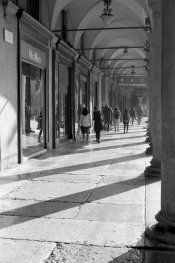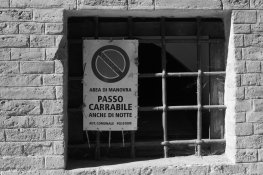Last edited:
-
Welcome to Photrio!Registration is fast and free. Join today to unlock search, see fewer ads, and access all forum features.Click here to sign up
You are using an out of date browser. It may not display this or other websites correctly.
You should upgrade or use an alternative browser.
You should upgrade or use an alternative browser.
Film Ferrania p30
-
A
- Thread starter Ces1um
- Start date
Recent Classifieds
-
For Sale 28mm F2.8 Zuiko for Olympus OM SLR - Excellent Condition
- Started by davela
-
For Sale Nikon Coolscan 8000/9000 film holders - FH-869G, FH-869S, FH-835M
- Started by radialMelt
-
For Sale Mamiya 6 medium format rangefinder - late model, body only
- Started by radialMelt
-
For Sale Artist & Artisan Camera Neck Strap Boxed Nice!
- Started by samuelphoto
-
For Sale Leica M -2.0 Diopter Eyepiece Correction Lens #14358 Mint Boxed with Case
- Started by samuelphoto
Forum statistics
Looking very good for me poor but blissful ignoramus. The standard deviation of the members here is not zero, fortunately.Hello
Here is a link to an album of Film Ferrania P80 that I shot at 40iso and developed in PyrocatHD .......Comments suggestions and criticisms are welcome, note I have only been using this Pyrocat for a short time so I am still learning it.
https://www.flickr.com/photos/45govt/albums/72157689242294536
- Joined
- Dec 14, 2013
- Messages
- 198
- Format
- 35mm
Constrast is obviously controlled both by exposure and development...Once more dear friends unto the breach. Contrast is controlled by development and not by exposure. If the results are too contrasty then reduce the development.
Constrast is obviously controlled both by exposure and development...
Within the useful portion of the H&D curve contrast is controlled only by development. If this weren't true the Zone System wouldn't be feasible. Check the link to post #288 and you will see what I said is true. The key here is the phrase 'useful range.'
Last edited:
I think what jonasfj means is that in a "flat" scene with very little contrast (a grey card as an extreme example), no amount of development adjustment will give it much more contrast. In that sense, the exposure matters in that the scene itself is important. It could just be a case of differing opinions of the meaning of the word "exposure" hereWithin the useful portion of the H&D curve contrast is controlled only by development. If this weren't true the Zone System wouldn't be feasible. Check the link to post #288 and you will see what I said is true. The key here is the phrase 'useful range.'

- Joined
- Dec 14, 2013
- Messages
- 198
- Format
- 35mm
Mr Gerald C Kock says that in "the useful range" only development matters. Theoretically if your exposure fits on the linear part of the characteristic curve and you adjust development in such a way that it still fits on the straight part of the curve, he is perfectly right. However, when changing development the curve moves horizontally at the same time as it stretches or compresses vertically. Thus, in general terms, you need to adjust your exposure to follow the curve so you keep staying in the "useful range". What I mean is that exposure and development are linked together and any other statement will be a discussion about semantics, not photography!I think what jonasfj means is that in a "flat" scene with very little contrast (a grey card as an extreme example), no amount of development adjustment will give it much more contrast. In that sense, the exposure matters in that the scene itself is important. It could just be a case of differing opinions of the meaning of the word "exposure" here
Thanks for the clarification!Mr Gerald C Kock says that in "the useful range" only development matters. Theoretically if your exposure fits on the linear part of the characteristic curve and you adjust development in such a way that it still fits on the straight part of the curve, he is perfectly right. However, when changing development the curve moves horizontally at the same time as it stretches or compresses vertically. Thus, in general terms, you need to adjust your exposure to follow the curve so you keep staying in the "useful range". What I mean is that exposure and development are linked together and any other statement will be a discussion about semantics, not photography!
Mr Gerald C Kock says that in "the useful range" only development matters. Theoretically if your exposure fits on the linear part of the characteristic curve and you adjust development in such a way that it still fits on the straight part of the curve, he is perfectly right. However, when changing development the curve moves horizontally at the same time as it stretches or compresses vertically. Thus, in general terms, you need to adjust your exposure to follow the curve so you keep staying in the "useful range". What I mean is that exposure and development are linked together and any other statement will be a discussion about semantics, not photography!
If you have a severely over exposed negative it will have little contrast and extending development will not help. Once again I refer to the website given in my post #288 and the illustration of the H&D and contrast curves. However a badly over exposed negative is not within the useful range (the latitude) of the film.
Last edited:
- Joined
- Nov 1, 2007
- Messages
- 533
- Format
- Multi Format
FWIW, TheDarkroom.com (A photrio sponsor) soups this stuff in DD-X (1+4) at 75°F(!) for 10.5 minutes. Looking at the results from my first roll, I'll probably be rating it at EI 50 going forward.

- Joined
- Apr 2, 2017
- Messages
- 639
- Format
- Multi Format
benveniste, really snappy!
I think Ferrania gave us a good replacement for the Kodalith film.FWIW, TheDarkroom.com (A photrio sponsor) soups this stuff in DD-X (1+4) at 75°F(!) for 10.5 minutes. Looking at the results from my first roll, I'll probably be rating it at EI 50 going forward.
View attachment 189189
Scott Micciche
Subscriber
Here is a latest roll, all shot in Bologna Centro. Processed in D-96, continuous agitation for 8 minutes @ 20C, 80ASA, 1 min water bath, TF-5 fix 4 minutes, Pakon F135 scan to raw, invert in colorperfect, no other modifications or dust removal. I have more on the Flickr site if anyone is interested in seeing the others.
I'll be sticking with D-96 for the last (3rd) roll.
D-96: https://www.flickr.com/photos/thekurgan/albums/72157686951637012
Ilfosol 3 https://www.flickr.com/photos/thekurgan/albums/72157687834175061
I'll be sticking with D-96 for the last (3rd) roll.
D-96: https://www.flickr.com/photos/thekurgan/albums/72157686951637012
Ilfosol 3 https://www.flickr.com/photos/thekurgan/albums/72157687834175061
Attachments
Truzi
Member
- Joined
- Mar 18, 2012
- Messages
- 2,676
- Format
- Multi Format
I've not used my P30 yet, so I can't comment on it from experience, and I realize all that I've seen are scans. However, my impressions are the film is (for lack of a better word) "dark" - but in a good sort of way. It seems to have good detail and a lovely tonality. Maybe someone can help me articulate what it is I'm seeing.
Here is a latest roll, all shot in Bologna Centro. Processed in D-96, continuous agitation for 8 minutes @ 20C, 80ASA, 1 min water bath, TF-5 fix 4 minutes, Pakon F135 scan to raw, invert in colorperfect, no other modifications or dust removal. I have more on the Flickr site if anyone is interested in seeing the others.
I'll be sticking with D-96 for the last (3rd) roll.
D-96: https://www.flickr.com/photos/thekurgan/albums/72157686951637012
Ilfosol 3 https://www.flickr.com/photos/thekurgan/albums/72157687834175061
These are gorgeous photographs. You've been able to bring out this film's gorgeous tonality. It seems like one of the most original "recent" films.
Scott Micciche
Subscriber
I've not used my P30 yet, so I can't comment on it from experience, and I realize all that I've seen are scans. However, my impressions are the film is (for lack of a better word) "dark" - but in a good sort of way. It seems to have good detail and a lovely tonality. Maybe someone can help me articulate what it is I'm seeing.
Dark scans I also see quite often. I cannot speak to how other scanners, techniques or software affect the output for us to view online, but, from my experience with the P30's dark film base, it's like a smokey purple. When I scan raw using the Pakon, everything is seen by the scanner, including the film base, which acts to add density, much like a staining developer, but much darker. The pakon outputs the linear 16 bit .raw files, that need to be converted to tiff so colorperfect can invert it using it's algorithm related to the actual film density.
I convert the using imagemagick, with a simple command line:
convert -size 3000x2000+16 -depth 16 -interlace plane gray:"${name}" -brighness-contrast .2x0 tif:"${destinationFile}"
This small 0.2% bump in linear brightness (0% contrast modification) overcomes the base and the images look as they print, otherwise they look very strange when colorperfect does its inversion.
I've printed 3 frames of varying contrast and they do look really nice in tonality in Ilford multigrade paper at grade 2.
I do not know how other film scanner software examines the negatives and makes adjustments. I found it best to go linear and let colorperfect do the work based on the actual density.
I hope this helps explain some of the dark images we see.
Scott Micciche
Subscriber
These are gorgeous photographs. You've been able to bring out this film's gorgeous tonality. It seems like one of the most original "recent" films.
Thank you for taking a look and I agree, it has a motion picture frame look and the tonal transitions are very smooth.
twelvetone12
Member
Thanks Scott! Beautiful shots!  I counter with a couple frames of Bologna, but @ 25 asa in Beutler.
I counter with a couple frames of Bologna, but @ 25 asa in Beutler.
I will mix some d96 and try my next rolls with that. When I did my first tests I used what I had on hand (Rodinal), but I'm now convinced P30 does not work well at all with developers like Rodinal or Beutler. There always seems to have a huge speed loss. I did some tests in Rodinal and @80 with the given time (14min) the film seems very underexposed and overdeveloped. I got good results with 10 minutes @ 25 iso. Anybody has an idea why this happens?
In any case I love this film, I hope I can use it a full box speed when it comes back.
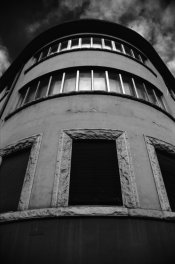
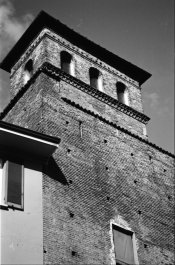
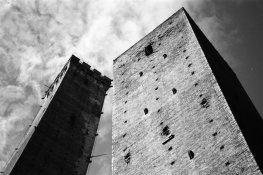

 I counter with a couple frames of Bologna, but @ 25 asa in Beutler.
I counter with a couple frames of Bologna, but @ 25 asa in Beutler.I will mix some d96 and try my next rolls with that. When I did my first tests I used what I had on hand (Rodinal), but I'm now convinced P30 does not work well at all with developers like Rodinal or Beutler. There always seems to have a huge speed loss. I did some tests in Rodinal and @80 with the given time (14min) the film seems very underexposed and overdeveloped. I got good results with 10 minutes @ 25 iso. Anybody has an idea why this happens?
In any case I love this film, I hope I can use it a full box speed when it comes back.




Scott Micciche
Subscriber
I recognize due torre, but the others, especially that wood door, I do not recognize. Stunning work! I believe the P30 develops best with constant agitation methods for low pH developers, and gentile, infrequent agitation with high pH developers. When I used the Ilsofol 3 method, it was 1 inversion per minute following an initial 30s, I believe that would produce an underdeveloped negative with another film stock. Normally, I would invert for 10s at each minute for Ifosol 3.
- Joined
- Mar 16, 2012
- Messages
- 3,398
- Format
- Medium Format
FWIW, TheDarkroom.com (A photrio sponsor) soups this stuff in DD-X (1+4) at 75°F(!) for 10.5 minutes. Looking at the results from my first roll, I'll probably be rating it at EI 50 going forward.
View attachment 189189
FWIW, TheDarkroom.com (A photrio sponsor) soups this stuff in DD-X (1+4) at 75°F(!) for 10.5 minutes. Looking at the results from my first roll, I'll probably be rating it at EI 50 going forward.
View attachment 189189
Hello benveniste - the facts to overexposured bw films are facts (as mentioned before) I would like to state :
Endless discussions will not help!
If it is so (overexposure = minimized tonal range, smaler contrast ability from the emulsion) everyone has to live with.
I just remember some formulas of contrast compensation developer by diferent dilution.
But exact exposure will help better.
Coming to your shot : Noting will help here - you have so hard contrasts I never
saw before .....





 ....!
....!But let me also say to your shot :
It is just ecxellent (because of hard contrasts)
......just absolute great...



 !!!!!!!
!!!!!!!with compliments
PS : Sometimes it is the better way not
to focus so much on technical corectness.
But this should also not mean every simple unsharp shot is great art !
- Joined
- Nov 1, 2007
- Messages
- 533
- Format
- Multi Format
I just remember some formulas of contrast compensation developer by diferent dilution.
Indeed. When dealing with a film for the first time, I try to shoot a variety of subjects, develop according to manufacturer's recommendation, and then adjust. Unfortunately, I no longer have easy access to a darkroom, and even if I wanted to set one up at home, chemical disposal regulations would require me to store and dispose of my spent chemicals as Hazmat.
Oddly, Ferrania includes http://thedarkroom.com on its list of recommended labs, but does not include their souping formula in the Dead Link Removed PDF. Instead, the PDF offers two lower temperature options with DD-X, one for an EI of 50 and one for an EI of 80. For the next rolls, I have to decide whether I want to try a local lab which uses a lower temperature or diff, or find subjects (like this one) which benefit from the hard contrasts.
Thanks for the kind words about the shot.
However, my impressions are the film is "dark" - but in a good sort of way. Maybe someone can help me articulate what it is I'm seeing.
Simple, the lighting. High-key lighting is not predominant these days. It of course takes a motive that justifies an image overflowing with light. We have a wonderful word in the German language for such lustrous themes, duftig. I am after it with 8mm filmmaking but am still not where I want to be at it.
- Joined
- Mar 16, 2012
- Messages
- 3,398
- Format
- Medium Format
Indeed. When dealing with a film for the first time, I try to shoot a variety of subjects, develop according to manufacturer's recommendation, and then adjust. Unfortunately, I no longer have easy access to a darkroom, and even if I wanted to set one up at home, chemical disposal regulations would require me to store and dispose of my spent chemicals as Hazmat.
Oddly, Ferrania includes http://thedarkroom.com on its list of recommended labs, but does not include their souping formula in the Dead Link Removed PDF. Instead, the PDF offers two lower temperature options with DD-X, one for an EI of 50 and one for an EI of 80. For the next rolls, I have to decide whether I want to try a local lab which uses a lower temperature or diff, or find subjects (like this one) which benefit from the hard contrasts.
Thanks for the kind words about the shot.
Ok this looks like it could be a little complicate.
I just remember again an article in a photo magazine.They tested a couple of special b&w labs.The result was dramaticaly bad.
To ask a comercial lab to use special temperatures is not so easy.
A) A comercial lab is using machines.
In this case they perhaps will just laughing about.Because their standard developing uses xy degree and xy standard (replenisable) developer chems.
B) A comercial lab offers individual tank developement.In this case it could be possible they follow your instructions regarding temperatures. But I personaly have a problem with this sort of labs.
"I don't realy trust them and I will have no control about."
By the time - this method is the most expensive one. And Photo Magazines warned about in the early 90th..

 !
!C) A friend of you is developing your films
within your individual instructions.
Perhaps he will swear : "I did it in the exact way you told me"
But perhaps he has a very lot experience and may think : "Developing temperature from Ferrania are nonsence the best method is my special soup with stand developement 1,5 hours at low temperatures - I will make him happy !"
What I want to explain : To find out if Ferranias recomandations are just great
or not is just to be done by yourself.
And possible you find better ways from own experience from time to time.
There is no need of a darkroom if you are just developing bw.
But if there is no way at all I would als a friend because comercial labs can tell you everythink and they definitivly possible now nothing about Ferrania.
"You told us to develope the bw film of your Ferrari shooting - but I am sorry we perhaps mixed two films - there are no sportscars on your film.But I seriously contacted our manager obout this terrible issue immediately! "
This I could realy imagine as possible result to costs of $ 22,50
 ...
... ..
.. ..
..with regards
Scott Micciche
Subscriber
Simple, the lighting. High-key lighting is not predominant these days. It of course takes a motive that justifies an image overflowing with light. We have a wonderful word in the German language for such lustrous themes, duftig. I am after it with 8mm filmmaking but am still not where I want to be at it.
I agree. The P30 demands bright light if not controlled as it might be on a movie set. Images I've taken in dark lighting reward me with a dark image.
BAC1967
Subscriber
Yes, if you look back through this thread you will see some comments. This was developed in Beerenol, shot at ISO 25.Has anyone tried this stuff in Caffenol yet?
The Recipe:
Beer (cheap Lager, I used Pabst Blue Ribbon) - 12oz
Sodium Carbonate (Arm & Hammer Washing Soda) - 2.75 Tsp
Ascorbic Acid Powder (Vitamin C) - 1.25 Tsp
Salt (Morton's Iodized Table Salt) - 1/4 Tsp
Developed at 20 degrees C for 20 minutes. Agitate first 30 seconds then 15 seconds every minute.
Warning - Add the Ascorbic Acid after the Sodium Carbonate to avoid a foam explosion.
 Burnt Hog by Bryan Chernick, on Flickr
Burnt Hog by Bryan Chernick, on Flickr| Photrio.com contains affiliate links to products. We may receive a commission for purchases made through these links. To read our full affiliate disclosure statement please click Here. |
PHOTRIO PARTNERS EQUALLY FUNDING OUR COMMUNITY:  |




